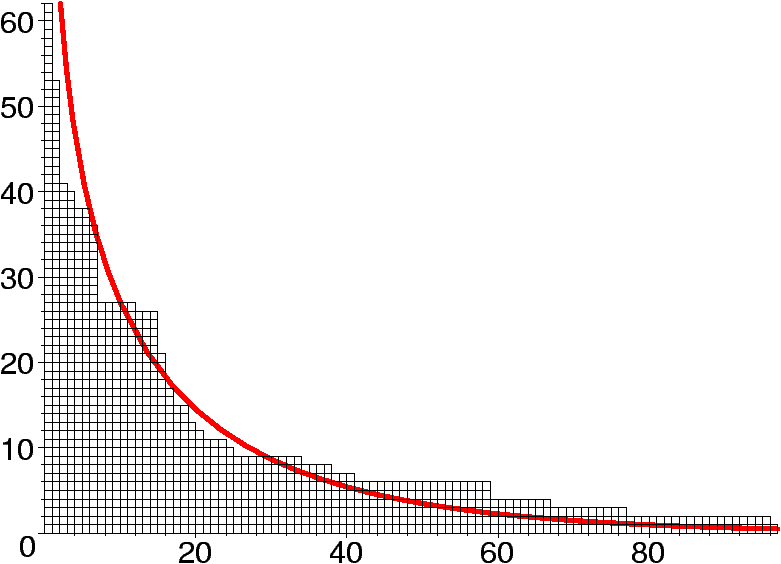

What does a random partition of a large integer look like? The talk presents asymptotic results and variational problems for this question, obtained in a work of A. Dembo jointly with A. Vershik and O. Zeitouni [4]. The techniques involve some combinatorics and mostly probability theory. Other applications concern asymptotics of various random combinatorial structures, such as permutations, forests of trees, and convex polygons with integer vertices. This summary is intended as a casual introduction to the reading of the paper [4].
| P(z)= |
|
Pnzn = |
|
|
, Ps(z)= |
|
Pnzn= |
|
( | 1+zk | ) | , |
The coefficient of xn in (1-2x+2x4-2x9+···)-1 is the integer nearest toThis assertion (that in fact needs to be mildly amended) is, in view of Euler's pentagonal number theorem, directly relevant to our subject. In a celebrated series of memoirs published in 1917 and 1918, Hardy and Ramanujan found very precise estimates for the partition numbers implying in particular: See [7, Ch VIII] for an insightful discussion and [2, Ch. 5] for the reexamination of the subject by Meinardus.
1
4n æ
ç
ç
ècoshp(n)1/2-
sinh p(n)1/2
p(n)1/2 ö
÷
÷
ø.
| z~ 1- |
|
, zs~ 1- |
|
, |
| e-n Q(f), Q(f):=2 | ó õó õ |
|
log | ( | 2e1/2(s-t) | ) |
æ ç ç è |
1- |
|
(s) |
ö ÷ ÷ ø |
æ ç ç è |
1+ |
|
(t) |
ö ÷ ÷ ø |
dt ds (5) |
We now return to partitions and let Qn and Qns represent the uniform probability models on Pn and Pns. A partition (or diagram) l can be written under the form l=1r12r23r3···. Graphically, we define the ``contour'' or ``shape,''

| jl(t):= |
|
rk, t³0, |
|
(t)= |
|
jl | ( | \lceil | t(n)1/2 | \rceil | ) | . |
|
(· | ) |
|
Y(· | ), |
|
s(· | ) |
|
Ys(·), where |
| Is(f)=2b- | ó õ |
|
h |
æ ç ç è |
- |
|
(t) |
ö ÷ ÷ ø |
dt, |
| Is(f)=2a- | ó õ |
|
æ ç ç è |
1- |
|
(t) |
ö ÷ ÷ ø |
h |
æ ç ç ç ç ç è |
|
ö ÷ ÷ ÷ ÷ ÷ ø |
dt. |
|
with | C(x)= |
|
x|g|, |
|
P(N=n) zn= |
|
. |
| xn=1- |
|
, xns=1- |
|
, |
| Exn |
æ ç ç è |
|
(t) |
ö ÷ ÷ ø |
= |
|
|
|
® | ó õ |
|
|
du =:Y(t). |
This document was translated from LATEX by HEVEA.